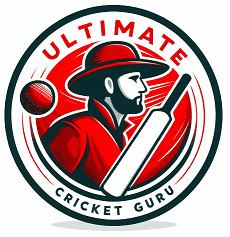When it comes to cricket betting, understanding head-to-head data between teams and players is indeed crucial for making informed decisions. In this piece, we look at the importance of head to head in cricket betting to go with the ways it can be used.
Unlocking the Potential of Head-to-Head Data in Cricket Betting
In the world of cricket betting, where uncertainties loom large, arming oneself with the right information can make all the difference between a successful bet and a lost wager.
Among the plethora of factors to consider, head-to-head data emerges as a cornerstone for strategic decision-making.
What is Cricket’s Head-to-Head Data?
Head-to-head data refers to the historical performance of two cricketing entities—be it teams or players—against each other. It encapsulates a series of encounters, highlighting the dynamics, strengths, and weaknesses in their matchups.
Let’s first look at the team head to head records from the perspective of betting.
The Significance of Team Head-to-Head Records
Now that we understand the concept of head to head in cricket, let’s dig deeper into why it’s so important to look at it in the course of our cricket betting journey.
Formulating Strategies
Team head-to-head records provide invaluable insights into the dynamics between two sides. Analyzing past encounters helps bettors gauge the relative strengths and weaknesses of each team, enabling them to formulate effective betting strategies.
For most cricketer bettors, perceptibly, Bangladesh is a better overall cricketing side than Zimbabwe but are they good enough in all conditions and all formats? Take the example of T20I cricket in Zimbabwe and Bangladesh have won and lost four matches apiece there against the hosts.
While the sample size is small, it also gives an indication that Bangladesh might not start off an overwhelming favourite in a T20I against hosts Zimbabwe.
Understanding Venue Dynamics
Cricket pitches and conditions vary significantly across different venues. Examining head-to-head records at specific grounds can shed light on how teams adapt to varying environments and pitch conditions, offering a deeper understanding for betting predictions.
India’s Test record in England, for instance, is their poorest among all the countries with the side having won just nine of their 60 Test matches there. As opposed to that, they are 24-15 at home against them and 5-10 against New Zealand in New Zealand.
Cricket captains around the world also look at the pitch and weather conditions and based on their previous understanding of the situation, tweak things around.
Even within a country, teams could have better track records at a particular venue because it suits their style of play. The example of Australia’s record at The Gabba lies in the forefront of this.
Going back to 1989 when Australia were held to a draw at this venue by Sri Lanka, the hosts went 31 Tests at this venue without a defeat till 2021. It was India who finally pulled the mat off under their feet but it gives you an idea how important it is to analyse a team’s record at a particular venue too.
This track record combined with the section below on the need to identify trends becomes an important factor.
Identifying Trends
Consistency in performance or streaks of victories can be indicative of underlying patterns. Bettors can leverage this information to identify trends and capitalize on potentially lucrative betting opportunities.
This is an interesting one. One cannot just look at the overall head to head record to decide on how things could go for the two teams in question. There is a need to dig a lot deeper.
Let’s take the example of India v Pakistan cricket. The two sides don’t play a lot of bilateral cricket these days and the overall ODI head to head record lies heavily in favour of Pakistan, who lead 73-57 in this format.
Things have changed dramatically since the turn of this century though with India 28-21 up on Pakistan since 2001. Since 2010, this record is 12-4 in their favour.
What this trend tells us is that while the Pakistani team of yesteryears had a wood on India, the latter is a far stronger line-up in the past decade or so and will invariably start off a favourite against Pakistan.
Unveiling Player Match-up Records
We have looked at team head to head records, a vital concept in cricket match betting. That’s not enough though with the next step consisting of looking at the match-up records between players.
The concept of player match-ups has already been spoken about in great detail in our article here, but to give you an overview here’s what it consists of.
Assessing Individual Performances
Cricket is not only about team dynamics but also about individual brilliance. Player match-up records delve into the performances of key players against specific opponents, providing insights into their form, strengths, and weaknesses.
Individual performances can be looked at in specific countries, particular venues and against specific bowlers or batters as well.
Some players would have an excellent record at a particular venue – like Rohit Sharma at the Eden Gardens, Kolkata – and it does give them a psychological edge to play at those venues. It’s good to have a knowledge of that before placing your cricket bet, especially while betting on player milestones like a century or a five-wicket haul.
Understanding Tactical Battles
Cricket often witnesses intriguing tactical battles between players—be it a bowler dominating a batsman or vice versa. Analyzing player match-up records equips bettors with the knowledge to anticipate such battles and make informed betting decisions.
Injury and Fitness Considerations
Player match-up records also offer insights into the physical and mental fitness of players. Long-standing rivalries or one-sided encounters might hint at underlying factors such as injuries or loss of form, which could impact betting outcomes.
Leveraging Head-to-Head Data Wisely
Now that we understand the concept and importance of head to head data, it’s also important to know how to use this while betting on cricket.
Context Matters
While head-to-head data provides valuable insights, it’s essential to contextualize the information. Factors such as recent form, team composition, and external variables can significantly influence the outcome of a match, warranting a holistic approach to betting analysis.
Statistical Analysis
Utilize statistical tools and analytical models to dissect head-to-head data comprehensively. Statistical trends, such as average scores, bowling figures, and win-loss ratios, can offer deeper insights into the dynamics of cricketing encounters.
Continuous Learning
The world of cricket is dynamic, characterized by evolving strategies and player dynamics. Keep abreast of the latest developments, team news, and performance trends to refine your betting strategies continually.
Resources to Use for Cricket Head to Head Analysis
Two of our most favourite free websites for head to head analysis are as follows:
- Statsguru on ESPNCricinfo.com
- CricMetric.com
There isn’t a free stats engine like Statsguru and it can be used for finding a plethora of useful statistics including team head to head record and match scorecards. However, they don’t have a feature to search for player head to head and that’s where CricMetric comes into play.
CricMetric also provides domestic data unlike Statsguru which is restricted to internationals as far as head to head records are concerned.
Final Thoughts on the Use of Head to Head in Cricket Betting
In conclusion, head-to-head data serves as a potent weapon in the arsenal of cricket bettors, offering invaluable insights into team dynamics and individual performances.
By leveraging this data judiciously and complementing it with astute analysis, bettors can enhance their chances of making informed and profitable betting decisions in the unpredictable realm of cricket.





